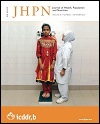Food Insecurity, Health and Nutritional Status among Sample of Palm-plantation Households in Malaysia
DOI:
https://doi.org/10.3329/jhpn.v30i3.12292Keywords:
Diet diversity, Food insecurity, Health risks, Nutritional status, MalaysiaAbstract
Food insecurity is a worldwide problem and has been shown to contribute to poor health and nutritional outcomes. In Malaysia, poor dietary intake, overweight and obesity, diabetes mellitus, and hypercholesterolaemia have been reported to be more prevalent in females compared to males and in Indians compared to other ethnic groups. A cross-sectional study was designed to investigate the relationship between food insecurity and health and nutritional status among 169 Indian women (19-49 years old, non-pregnant, and non-lactating) from randomly-selected palm-plantation households in Negeri Sembilan, Malaysia. Subjects were interviewed for socioeconomic and demographic data, and information on household food security and dietary intake. They were examined for weight, height, waist-circumference, blood pressure and lipids, and plasma glucose levels. For analysis of data, descriptive statistics, ANOVA, and logistic regression were used. Majority (85.2%) of the households showed food insecurity as assessed using the Radimer/Cornell Hunger and Food Insecurity Instrument. The food-secure women had significantly higher mean years of education and lower mean number of children than food-insecure groups (p<0.05). There was a significant decrease in the mean household income and income per capita as food insecurity worsened (p<0.05). Women who reported food security had significantly higher mean diet diversity score (11.60}4.13) thanchild hunger (9.23}3.36). The group of subjects with higher intake of meat/fish/poultry/legumes (crude odds ratio [OR]=0.53, confidence interval [CI]=0.29-0.95) and higher diet diversity score (crude OR=0.87, CI=0.78-0.97) was more likely to have <3 health risks. Diet diversity score remained a significant protective factor against heath risks even after adjusting for other variables. The present study showed that food insecurity is indirectly associated with poor health and nutritional status. Therefore, appropriate communitybased interventions should be designed and implemented to address the problems of food insecurity and possible health and nutritional outcomes.
DOI: http://dx.doi.org/10.3329/jhpn.v30i3.12292
J HEALTH POPUL NUTR 2012 Sep;30(3):291-302
Downloads
145
167

